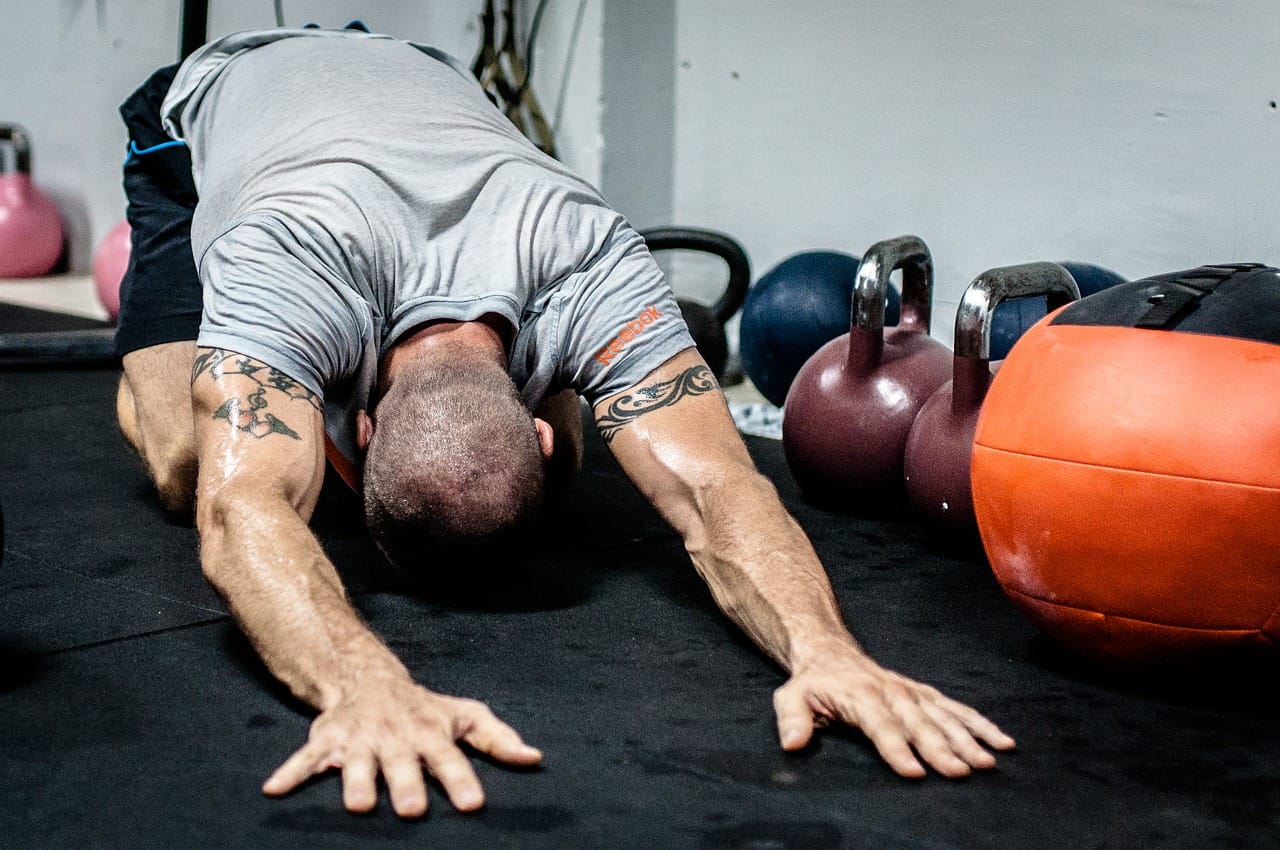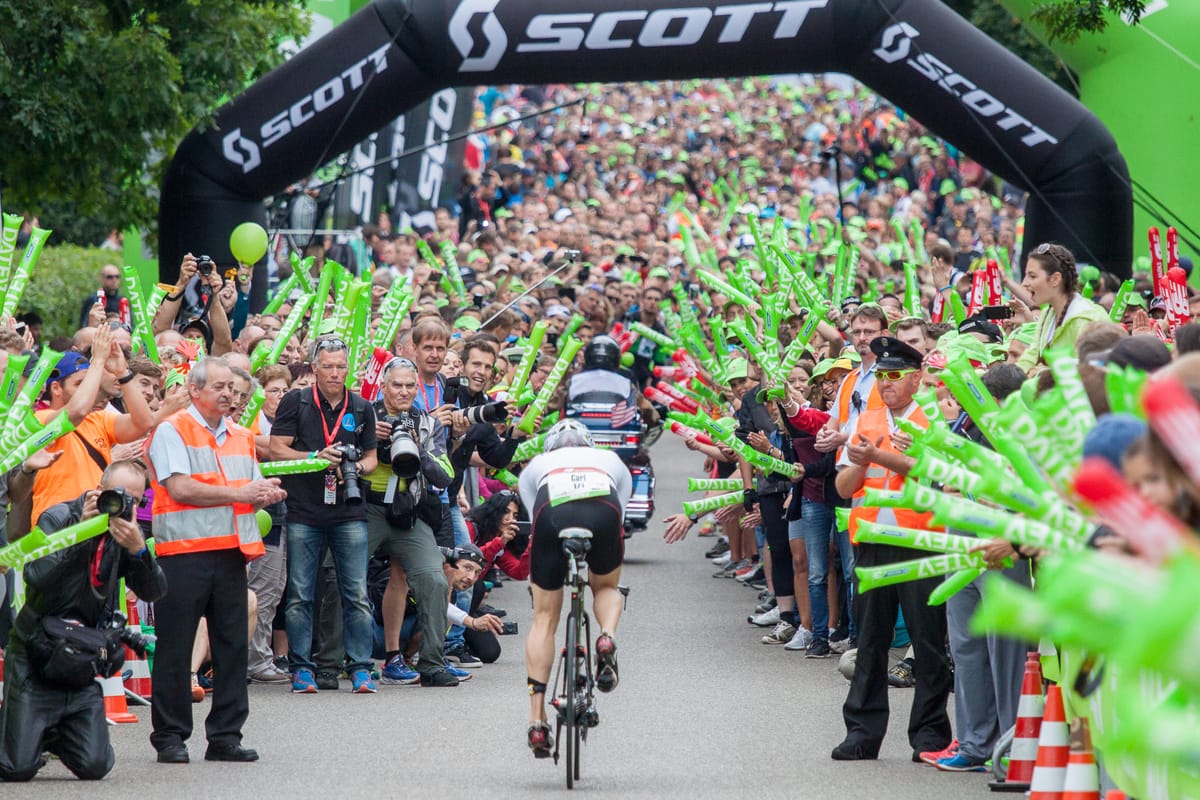Cycling can be a major factor in triathlete injury, and though many athletes attribute their muscle soreness and injuries to their running or swimming, it’s important to understand that poor cycling technique or bike set-up is often a key contributing factor in triathlete injuries. Cycling is a relatively unnatural position and action. While it’s true that cycling is low impact when compared to running, it’s also safe to say that the human body did not evolve to allow us to ride bikes.
Cycling places the muscles of the trunk, neck and hips in positions that are generally considered suboptimal for maintaining good musculoskeletal health for sustained periods of time. Even small imperfections in cycling technique and positioning can become exaggerated over the thousands of pedal strokes taken while riding. Fortunately, correct cycling technique should work basically every muscle in the lower body, which limits the chances of muscle imbalances developing. Combined with effective body management practices, it is possible to virtually eliminate the risk of cycling injuries – well, those that don’t involve hitting the tarmac at speed, at least.
The keys to injury prevention and management
Cycling is naturally low impact, so assuming that set-up is done correctly, your body is generally able to deal with the loads that cycling generates. Additionally, the cycling action is extremely effective at strengthening all of the muscles of the lower body, and avoiding muscle imbalances. Nonetheless, there are a couple of great ways to minimise the risk of injury and manage muscle soreness related to cycling:
- Core strength to minimise unwanted movement of the trunk and pelvis and provide a stable platform for efficient pedal stroke.
- Stretching and flexibility training to counteract the repetitive and sustained use of muscles in suboptimal position during cycling.
Core/Trunk Strength
Surprisingly, many amateur athletes often overlook the contribution that core strength makes to the cycling motion. A bike is inherently unstable, so naturally it takes a degree of trunk strength to simply maintain your balance on the bike. On top of this, for the human body to exert any force through an object (for example, the pedals and bars), we always require a stable platform to drive off.
A simple example of this might be to think of your rectus femoris (rec fem), the long muscle in your quadriceps that attaches at the front of the pelvis and inserts into the shinbone (tibia). When the rec fem pulls on one side of your body, it exerts a force that flexes the hip and extends the knee. Due to its unilateral action during cycling, the rec fem is also exerting a downward pull on one side of the pelvis at a time. If the pelvis is not stabilised by other muscles around the trunk, we could expect that the force generated by the rec fem would result not only in extension of the knee (which we do want), but also in a forward tilt and sideways drop on that side of the pelvis (which is definitely not what we want). The fact that this doesn’t happen for most cyclists is a great example of your core in action, stabilising the pelvis so that the force of the rec fem muscle can be translated entirely through extension of your knee and into the pedal stroke. Now consider the fact that just about every muscle in your legs, and many in your arms, are working during the pedal stroke, exerting force around your spine and pelvis. This explains why we need a strong core to not only ride efficiently, but also prevent unwanted movement that can result in injury.
Stretching
As previously mentioned, cycling places the body in a sustained forward position and requires a number of muscles to change their resting length while riding. When done effectively, the cycling motion is also highly repetitive, which is often a recipe for tight muscles. To counteract this, start with a stretching program focusing on the following key areas:
Neck – the lower your body position, the more your neck is required to extend to allow you to see in front. This results in tightness of the neck extensor muscles. Neck position also tends to be very static, so it’s important to maintain range of motion to avoid stiffness in the neck. Some easy neck stretches include using your hands to pull the head to the side and front, and slowly rolling and turning the head from side to side. Spend a few minutes after each ride performing these actions, and remember to always move gently when stretching the neck.
Lower back – due to the sustained flexed position of the lower back, it’s important to maintain range of motion in the spine before and after cycling. Start with a basic cobra stretch to improve extension, and a lumbar rotation stretch or rolling your legs side to side to improve rotation. A common source of lower back pain in cycling is the quadratus lumborum (QL). To stretch the QL, sit with your legs outstretched and apart, and reach toward one foot with your hand. Once your body is stretched down as far as possible, hold your toes with your hand on the same side and start to rotate your body in the opposite direction, reaching your arm back behind your head. You should feel a stretch down the side of your lower back. This stretch is best performed with a partner.
Legs – for triathletes, probably the most important muscles to stretch are the psoas or hip flexors, which can easily become shortened when cycling. Starting in a lunge position, lower your back knee to the floor, then push your hips forward until you feel a stretch in front of the hip on your back leg. It also helps to stretch any muscles that cross two joints, as these tend to require greater extensibility. This includes the hamstrings, quadriceps (rectus femoris) and gastrocnemius. Depending on the amount of ankling utilised in the pedal stroke, you may also need to stretch the muscle on the front of your shin (tibialis anterior), which can easily be done by kneeling with your toes pointed, then sitting on your heels.








